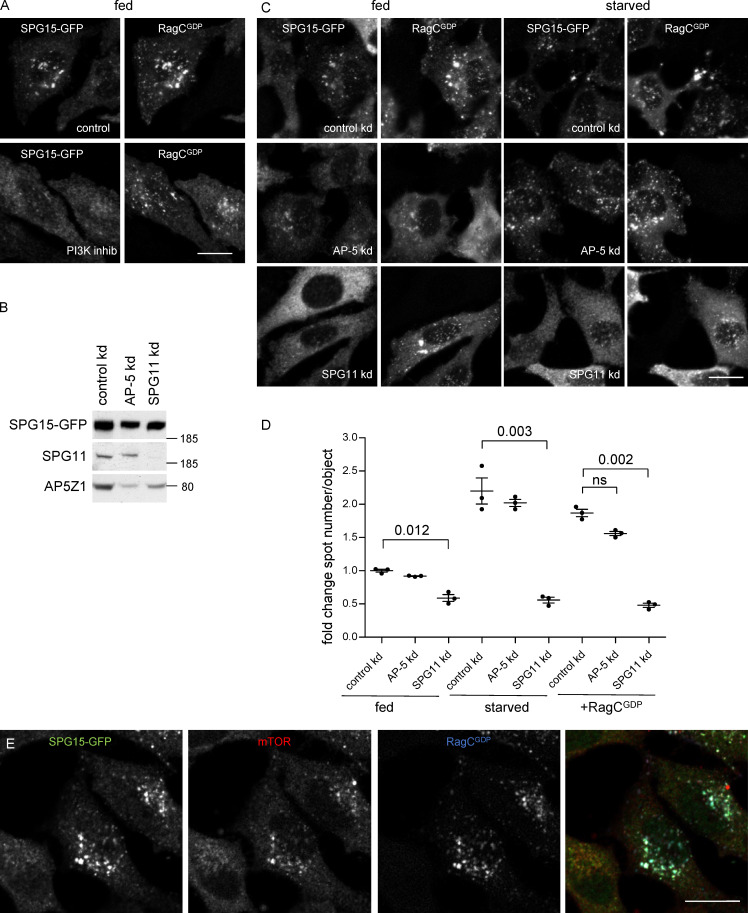Figure 6.
SPG15 recruitment is dependent on the simultaneous binding of PI3P and Rags. (A) IF double labeling for SPG15-GFP (amplified with anti-GFP) in cells that had been transiently transfected with HA-GST–tagged RagCGDP (labeled with anti-GST). Where indicated, cells were incubated with the PI3K inhibitor wortmannin (1 h). Note that the inhibitor prevents the RagCGDP-dependent recruitment of SPG15-GFP in fed cells. Scale bar: 20 µm. (B) Western blots of whole-cell lysates from SPG15-GFP cells treated with siRNA to knock down AP-5 or SPG11, showing knockdown efficiencies. Image is representative of two independent experiments. (C) IF double labeling for SPG15-GFP (amplified with anti-GFP) in cells that had been treated with siRNAs against AP-5 or SPG11 and then transiently transfected with HA-GST–tagged RagCGDP. The RagCGDP-dependent recruitment of SPG15-GFP in fed cells is inhibited by SPG11 depletion, while the cytosolic labeling of SPG15-GFP is increased, but this does not occur in AP-5–depleted cells. Scale bar: 20 µm. (D) Quantification of the fold change in spot count per object in SPG15-GFP cells in cells treated with siRNA to knock down AP-5 or SPG11. Where indicated, cells were incubated under fed or starved conditions (1 h) or transiently transfected with HA-GST-RagCGDP. The experiment was performed in biological triplicate (mean indicated; n = 3). Error bars represent SEM. (E) IF triple labeling for SPG15-GFP (amplified with anti-GFP) and mTOR in cells that had been transiently transfected with HA-GST–tagged RagCGDP (labeled with anti-HA). Note that the expression of HA-GST-RagCGDP causes the hyperrecruitment of both SPG15-GFP and mTOR onto the same structures. Scale bar: 20 µm. kd, knockdown.

